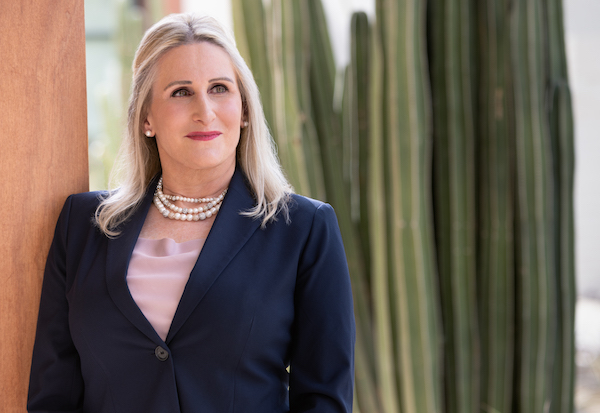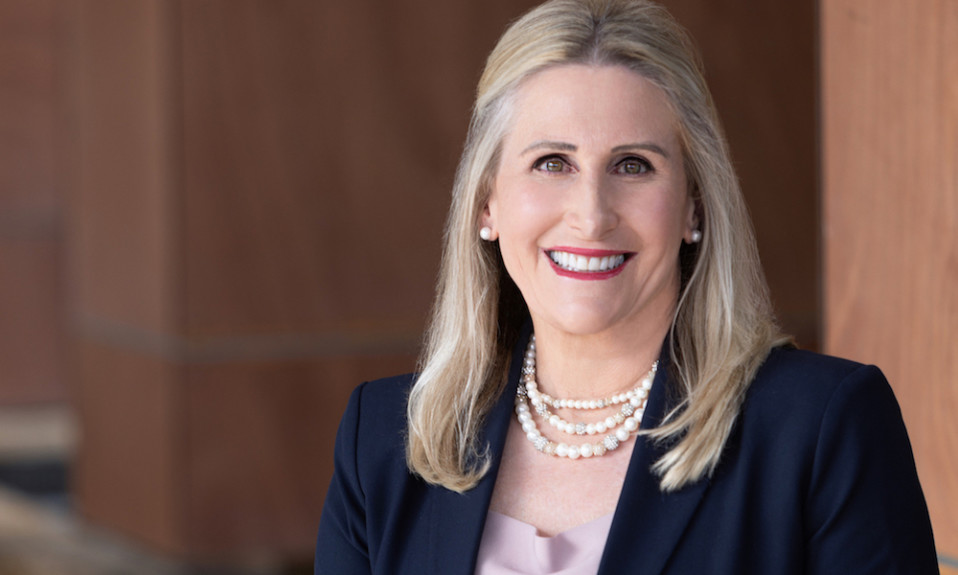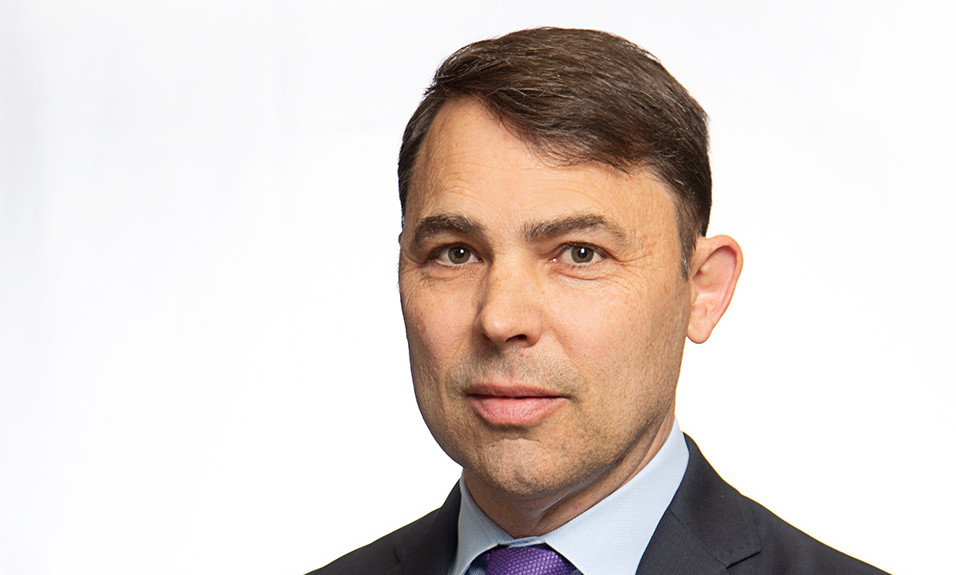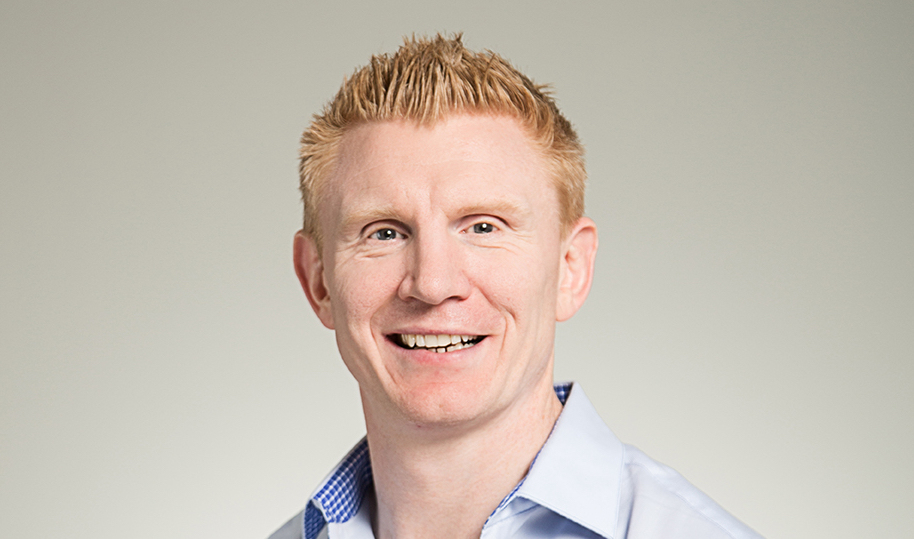The MD is about to officially become the treatment foundation’s first female chief medical officer—just the latest achievement in a highly unique career
By Jason Langendorf
Alta DeRoo, MD, can be described in many ways: a former Navy flight officer, an obstetrician-gynecologist (OBGYN), a decorated addiction medicine physician. And now there’s one more: chief medical officer (CMO) of the Hazelden Betty Ford Foundation.
Her new role will become official on Nov. 11—fittingly, Veterans Day. Taking the reins from the retiring Marvin Seppala, MD, DeRoo, a distinguished fellow of the American Society of Addiction Medicine (ASAM), will become the first woman CMO in Hazelden’s 72-year history. Having flown airborne early warning missions with U.S. Navy carrier task forces and developed the nationally adopted 2020 OBGYN Opioid Use Disorder module, DeRoo is a devoted advocate for women and veterans in addiction care.
In her new role, DeRoo will move from Hazelden’s Rancho Mirage facility—where she had operated as medical director of the organization’s three California locations—to its Minnesota headquarters.
TreatmentMagazine.com spoke with DeRoo about her new position, her celebrated stops along the way, and her views on addiction treatment.
Q: You’re a native of Michigan, so your promotion is a sort of homecoming for you, at least to the upper Midwest. Is that something you’re looking forward to?
A: Oh, yeah, it’ll be so nice to be back with Midwestern people. Good, salt-of-the-earth, hardworking people up in the Midwest. It’s just a little skip and a jump from Michigan. But yeah, we share a lot of the common Midwest values.
Q: You’ve spent time all around the country, and it sounds like you’ve just about been around the world. Are there any similarities that you draw between people, regions or cultures that help inform your work? Any differences?
A: No matter where you go around the globe, the disease of addiction is the same. It impacts people’s brains and bodies the same, whether it’s opioids or alcohol or stimulants. So the disease of addiction is the same for everybody. But cultures handle it differently. That is such a great question, because we find that some cultures want to keep it in the family and not seek treatment, not believe in medicines. “We can take care of this” and “We can help that family member get through this.” And then you see others who are much more open to Western medicine and the idea of using medications to assist in recovery.
Alcoholism probably is our No. 1 within the military—but the military is getting better. They are learning to see addiction as a disease. There’s a lot more opportunity for treatment in the military than there was in the past.”
—Alta DeRoo
Q: Your background is unique for a person in just about any capacity, but especially so in this new role. What first compelled you to work in the field of addiction treatment?
A: I saw a lot of sailors and soldiers coming home from war. This was the 1990s and early 2000s, and because I was an OBGYN, I saw a lot of these men with fertility problems. Opioids have a cascade effect from the brain down to testosterone; male fertility is impacted a lot by opioid use. And beyond the physiology of opioids on the brain and the male reproductive system, when soldiers also lose legs to amputation or an IED, it’s very difficult to engage in intercourse in a traditional way.
I became involved with these patients when I was at Walter Reed [National Military Medical Center]. Yes, I was involved in the reproductive and fertility aspects—the GYN part—but these patients had wives. And those wives often wanted to have a baby. So those men also became our patients, trying to help couples with pregnancy. We would have to do things like aspirate sperm, harvest that sperm, so that we could later go through in vitro fertilization. And for those men who had taken lots of opioids because of their injuries, this allowed them a way to bypass that influence from the opioids and still go on to conceive.
And then my follow-on tour from Walter Reed was at the naval hospital in Camp Lejeune [in Jacksonville, N.C.], which is a Marine Corps base. We had a lot of Marines coming back from combat, and it was during my tour there that my commanding officer supported me working outside the base, in a civilian capacity, at a methadone clinic. That doesn’t happen often, where the Navy lets you moonlight. That was in 2015, and I started working at methadone clinics in North Carolina and learning more about addiction.

Q: What would you say is the military’s approach to addiction among servicepeople? Is it addressed head-on? Just based on some of the issues you brought up, it sounds like a significant problem.
A: It is a big problem. Alcoholism probably is our No. 1 within the military—but the military is getting better. They are learning to see addiction as a disease. There’s a lot more opportunity for treatment in the military than there was in the past. I would say they’re catching up with times, on par with society in general. Remember, the military’s No. 1 mission is to keep a healthy fighting fleet to protect the world. But you can’t do that if your sailors and soldiers are suffering from addiction. So, they are coming around when it comes to treatment.
Q: In announcing your promotion, Hazelden CEO Joseph Lee mentioned that you’ll bring a “fresh perspective” to the position. How might your perspectives or philosophies influence care at Hazelden?
A: I do want to carry on the great work that Dr. Marvin Seppala has already established; he brought a lot of medications for opioid use disorder into our treatment at Hazelden. Before that, we used to be an abstinence-based, 12-step program, and now we use medications for opioid use disorder. And there are constantly new studies and innovative mechanisms coming to light to treat substance use disorder, so we’re looking into some of those. We’re looking into non-opioid methods of treating opioid use disorder. We’re looking at all of the articles that come out of addiction medicine studies regarding treating methamphetamine cravings. On the horizon, there seem to be some patient-control devices that may help mediate withdrawal symptoms for some opioids. And then there seem to be some options to treat stimulant use disorder with a combination of medications. We’re always looking at new research. This isn’t kitchen table, anecdotal stuff.
I would like to see all patients allowed the time in treatment they need and deserve. There is no magic number—16, 28 or 30 days in residential treatment, or any certain number of outpatient sessions—that will produce the outcomes patients seek.”
—Alta DeRoo
Q: By your own estimation, what is the significance of your becoming Hazelden’s first woman CMO?
A: If you take a look at the demographics of addiction, it affects males mostly. If you look at all our residential facilities around the U.S.—and we’re able to house a couple hundred patients at a time—it’s mostly men. But when women suffer from addiction, the secondary and third-order effects are so much more profound because they’re the caregivers. They take care of the kids, they take care of the men, sometimes they take care of their elderly parents. So I’m hoping that if I can be some type of symbol for them—or if I can say, “Hey, this works” or be a welcoming presence—maybe we can get more women into treatment.
Also, I do a lot of work with the American Society of Addiction Medicine, and when we have an opportunity to get another woman in to treat substance use disorders, I love it. Currently we have a fellowship here at the Betty Ford Center, and we have a male fellow and a female fellow. Next year, we’ll also have a female fellow and a male fellow. Most medical schools these days are 50-50, so the more women that we can get in to treat this, the better representation we’ll see—we’ll have [representation] among patients who will see that they have something in common with their physicians.
Q: You have extensive expertise treating pregnant women with opioid use disorder. What are some of the unique challenges there—things the public may not be aware of but should be?
A: One of the biggest challenges is when their partner is involved, and their partner is not yet involved in recovery. That’s a big sticking point, where the mom, or the female partner, may become sober but then the male partner is not. That makes it very difficult for the female partner to stay in recovery.
And it’s deeper than that. Sometimes women get involved with a substance because their partner introduces them to it. We find a lot of boyfriends who introduce it to women, and then the women become affected. And then they feed off each other—it becomes a codependency. And if one finds sobriety or recovery and the other doesn’t, it’s very difficult to sustain that relationship. So we hope that both find recovery, but it doesn’t always happen that way.
Q: Bringing a life into the world is enough to cause a lot of anxiety and stress without adding relationship issues and addiction to the mix.
A: Right. And the other part of the equation is stigma—the stigma involved with treating women with opioid use disorder. There’s still a lot out there. The fact that they’re bringing life into the world and may feel judged, even by doctors, nurses and the people caring for them. By normalizing addiction as another medical disease—like diabetes, hypertension, heart disease, cancer—we’re on the path toward decreasing that stigma. Because if you go into any hospital, you go into any meeting, any group, I guarantee you that everybody in that room will either have a close family member that suffered from addiction or have somebody close to them that suffered from addiction. It is so widespread. And unfortunately, when it becomes judgment and stigma coming from medical providers, that kind of sets us back.
Q: If you had the ability to snap your fingers and change one policy around addiction or treatment in this country, what would it be?
A: I would like to see all patients allowed the time in treatment they need and deserve. There is no magic number—16, 28 or 30 days in residential treatment, or any certain number of outpatient sessions—that will produce the outcomes patients seek. Some patients need to be engaged in professional care much longer, but they’re unable to pay or secure reimbursement.
It’s an honor to be part of this field and to extend hope to the millions out there struggling with substance use and mental health conditions. Ours is a mission of love, rooted in humility, empathy and grace—the spirit of recovery.”
—Alta DeRoo
Everyone’s needs are different, and care intensity and duration should be driven by the assessments of healthcare professionals. I’m not sure any one policy change will bring about true parity, but that’s certainly one change we need to keep working toward in partnership with payers, regulators, policymakers and others, so that people with addiction receive the same quality of care as people with other healthcare conditions.
Q: What is your top treatment takeaway—a last thought you’d like to leave us with on addiction, treatment or recovery?
A: It’s an honor to be part of this field and to extend hope to the millions out there struggling with substance use and mental health conditions. Ours is a mission of love, rooted in humility, empathy and grace—the spirit of recovery. If we continue to bring that spirit together with the science of medicine, psychotherapy and social work, we’ll help more people and become an increasingly positive force within healthcare and in our communities.














